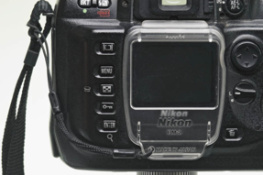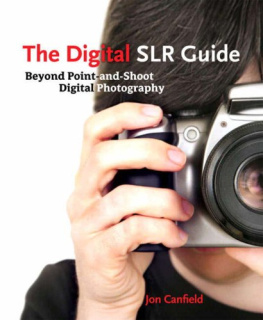
Dr. Brian Matsumoto is a retired research scientist who has worked for 30 years documenting experiments with technologically advanced cameras. He now spends his time photographing with a variety of cameras and lenses, and is interested in expanding a cameras potential by pairing it with specialized optics such as microscopes and telescopes. He enjoys spending time outdoors and carries his camera on all of his hikes to photograph nature.
In addition to the eight books he has written for Rocky Nook, Dr. Matsumoto has published several articles and has had his photographs published in a number of periodicals. His photographs have also appeared on the covers of American Laboratory, BioTechniques, and BioPhotonics. He is experienced in the technical aspects of photography and is an adjunct instructor for the Hooke College of Applied Sciences. Dr. Matsumoto recently served as a judge for the Olympus BioScapes International Digital Imaging Competition.

Carol F. Roullard has been an avid photographer since her high school years when she first experimented with black-and-white artistic composition. Since then, she has continued photographing mainly nature and architecture. Ms. Roullard has used a variety of cameras covering a wide range of makes and models, from simple point-and-shoot to complex professional-level cameras.
In addition to co-authoring seven books for Rocky Nook, Ms. Roullard produces award-winning fine art photography and utilizes her previous art business experience to manage her online gallery and present her work at art shows. Recently, Ms. Roullard has begun giving speeches for writers and photography associations.
As a former Project Management Quality and Compliance Engineer, Carol spent a number of years developing procedural and quality control methodology for IT projects. In addition, she has developed and conducted training sessions covering best practices for procedural and quality control, breaking down complex subjects into easy-to-use approaches to learning.
Visit Brians website at: www.MatsuImaging.com
Visit Carols website at: www.CarolRoullardArt.com
The Panasonic Lumix DMC-GH4
The Unofficial Quintessential Guide
Brian Matsumoto
Carol F. Roullard

Brian Matsumoto, Carol F. Roullard
Editor: Jocelyn Howell
Layout and Type: Petra Strauch
Cover design: Almute Kraus, www.exclam.de
Printed in USA
ISBN 978-1-937538-63-7
1st Edition
2015 by Brian Matsumoto, Carol F. Roullard
Rocky Nook Inc.
802 East Cota St., 3rd Floor
Santa Barbara, CA 93103
www.rockynook.com
Library of Congress Cataloging-in-Publication Data
Matsumoto, Brian.
The Panasonic Lumix DMC-GH4 : the unofficial quintessential guide / Brian Matsumoto, Carol F. Roullard. -- 1st edition.
pages cm
ISBN 978-1-937538-63-7 (softcover : alk. paper)
1. Lumix digital camera--Handbooks, manuals, etc. 2. Photography--Digital techniques--Handbooks, manuals, etc. I. Roullard, Carol F. II. Title.
TR263.L86M3794 2015
771.3--dc23
2015003881
All rights reserved. No part of the material protected by this copyright notice may be reproduced or utilized in any form, electronic or mechanical, including photocopying, recording, or by any information storage and retrieval system, without written permission of the publisher.
Many of the designations in this book used by manufacturers and sellers to distinguish their products are claimed as trademarks of their respective companies. Where those designations appear in this book, and Rocky Nook was aware of a trademark claim, the designations have been printed in caps or initial caps. All product names and services identified throughout this book are used in editorial fashion only and for the benefit of such companies with no intention of infringement of the trademark. They are not intended to convey endorsement or other affiliation with this book.
While reasonable care has been exercised in the preparation of this book, the publisher and author(s) assume no responsibility for errors or omissions, or for damages resulting from the use of the information contained herein or from the use of the discs or programs that may accompany it.
This book is printed on acid-free paper.
To our mothers, with much love.
Acknowledgments
This book was put together with a team of collaborators whose insights, enthusiasm, and fellowship were the inspiration for seeing this task to completion. It was a privilege and honor to work with such a fine group.
We relied on several associates who provided us with feedback, inspiration, and advice. We would like to extend special thanks to Scott Dordick of Acratech, Inc., who was very gracious in supplying tripod product photos. Also, we thank Matt Cardwell of Cognysis, Inc., for his continued guidance on focus stacking and his companys automated focusing rail, ShotStack. Our scientific and close-up photography has benefited from the advice he has provided. In addition, we thank Panasonic for allowing us to use their product shot of the Panasonic GH4 microphone.
We owe a special thanks to our friends at Rocky Nook whose help, kindness, and professionalism made this book possible. As with our previous books, the Rocky Nook team has been invaluable in helping us make a better product. We have appreciated the input and support from Gerhard Rossbach (Publisher, CEO), Joan Dixon (Managing Editor), Matthias Rossmanith (Project Manager), Jocelyn Howell (Editor), and Petra Strauch (Layout). Everyone has been wonderful at fielding our questions and working diligently toward completing this project.
And we cannot forget our families and friends. Thank you for your continued patience and understanding when our time has been limited and our conversations were often single-minded about the Panasonic GH4.
Brian Matsumoto
Carol Roullard
www.MatsuImaging.com
www.CarolRoullardArt.com
Preface
This book was written using a Panasonic GH4 with firmware 2.0. As a result we have included Panasonics new feature, 4K PHOTO. Considering the complexity and advanced features of this camera, we expect additional firmware updates will be developed and applied to the GH4.
This is one of the most complex cameras we have used. Its menu system is a labyrinth of commands and it is easy to become confused about which setting is the most appropriate for a given situation. However, the complexity is what makes this camera a versatile working tool. Of the professional interchangeable lens cameras, this one is the most flexible in fulfilling the needs of the professional or amateur photographer. We have used this camera on microscopes and telescopes, with its normal zoom lens or with legacy lenses, and the camera has accomplished the tasks to our satisfaction.
The complexity of this camera makes it difficult to explain all of its features. We tried to accomplish this task by writing appendices that describe and define all the cameras commands and options. We took the approach that many of the commands are seldom usedand we listed them in appendix A. This will allow the reader to see their functions, but not have to read minutia in each chapter. This, we hope, will make reading the chapters of the book easier.
Next page








